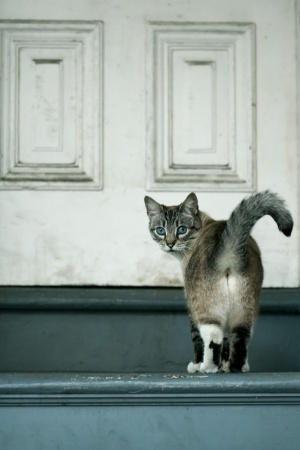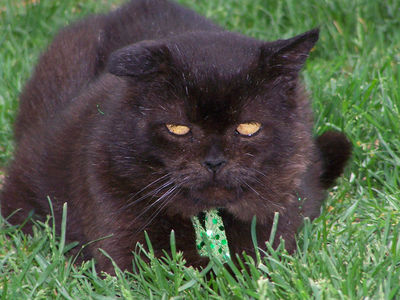
Hemorrhoids in cats is usually an inherited problem. There can be other causes such as obesity, lack of enough fiber in the diet and not drinking enough water on a daily basis.
Hemorrhoids are blood vessels that swell and appear as growths at the anal area.
Cats often become constipated and then strain to relieve themselves. This can cause small blood vessels to burst and you will find blood in the cat litter. Sometimes even when the cat is resting, there can be light bleeding.
Cats will try to rub their bottoms on furniture, rugs, lawns to help ease the itching caused by hemorrhoids. They will lick the anal area and try to bite off the offending growths as hemorrhoids can be very painful.
Cats often change their bathroom habits as a result of pain when defecating. It’s very important to make sure your cat eats a nutritious diet to avoid upset stomachs, constipation or diarrhea which can cause hemorrhoids to develop.
If you suspect your cat has hemorrhoids or you discover blood in the stool, you should take your cat to the veterinarian for examination. The vet can prescribe treatment depending on the severity of the problem. Any unusual behavior should be checked by a vet.
Dogs on the other hand don’t suffer from hemorrhoids. There are 2 anal sacs, sometimes called anal glands on either side of the anus. It is believed the secretions from the anal sacs is a way to mark territory or appear if the dog is frightened.
If you notice your dog rubbing his backside on the floor, blood in the anal area or excessive licking, it’s usually due to a problem with the anal sacs. Anal sacs can become impacted and cause a discharge. There can be more serious developments such as abscesses, infections and tumors.
If your dog is licking excessively at the anal area, drags along the floor often, emits a foul odor, you should take him to the veterinarian for a checkup. Your vet is the only one qualified to diagnose and treat the problem.


